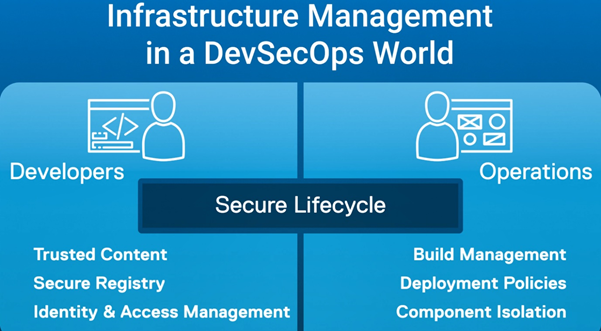This blog is co-authored by Jorge Gonzalez Moreno.
For years telecom operators, cloud service providers and system integrators have delivered infrastructure-as-a-service (IaaS) to their corporate customers. As information technology (IT) evolves and becomes more application-centric, many customers demand new services from these providers, in particular, Container-as-a-service (CaaS) and Platform-as-a-service (PaaS).
So far, system integrators have primarily provided technical assistance to their customers, followed by fully managed services for on-premises Kubernetes installations that customers initially used for pilots, which later became the production platform for their corporate digitalization initiatives.
As part of this transformation, some corporations prefer a hosted CaaS/PaaS¹ service rather than maintaining the new platform in their data center. To address this situation, the service provider of choice has two options:
-
- Resell a managed service from an hyperscaler with low margin.
- Build its own hosted service to expand its wallet share.
Considering that 96% of the respondents in the CNCF Survey 2021 said they were using or evaluating Kubernetes, the obvious choice for service providers is to build a Kubernetes based CaaS/PaaS. Although Kubernetes and related cloud-native technologies are all open-source projects, there are reasons why service providers should think twice before building a service using only open-source projects:
-
- Support. Relying on community support for escalations is not a good idea, especially if they would like to provide SLAs to their final customers.
- Security. Most corporations demand complex security policies as well as authentication and authorization processes that are time-consuming to set up and maintain using the open-source Kubernetes distribution.
- Integration. Kubernetes itself is only a foundation of an infrastructure and development platform and needs multiple additional components, including networking, storage, load balancers, monitoring, logging, CI/CD pipelines, etc. Integrating and managing these components is complex and time-consuming.
Multiple options in the market address these issues while maintaining compatibility with the open-source Kubernetes project. VMware Tanzu and SUSE Rancher are some options, and Cloud Management Platforms (CMP) such as Morpheus also have a Kubernetes distribution that is compelling for service providers.
However, Red Hat OpenShift is the leading multi-cloud container platform according to The Forrester Wave™: Multi-cloud Container Development Platforms, Q3 2020, and has a 47% market share. Red Hat has achieved its leading position partly due to its proven track record in supporting open-source projects, but more importantly, OpenShift is a fully integrated development platform. In addition to integration with networking, storage, monitoring, and logging, it includes an OpenShift API, an administration and developer console, and multiple layers of security. OpenShift is an interesting technology option for service providers who want to offer more than Kubernetes and provide a complete development platform as a service to their customers.
OpenShift’s capability to accelerate application deployment and improve the efficiency of the IT infrastructure teams are key to getting paybacks of deployments in less than 10 months.²
But as a service provider, selecting the core technology is just the first step of the journey. They will also need to decide on deployment options, security, monitoring, backup, availability capabilities, and integration with billing and other back-office processes. Dell Technologies can help with these decisions.
One of the most critical decisions is how a service provider runs OpenShift for their customers. The most common architecture is to run a single OpenShift cluster per customer. They can do this for their customers in multiple ways, including bare-metal and virtualized.
Deploying OpenShift bare-metal has license benefits for larger installations, but requires multiple physical hosts per installation and might be a too high entry point in most situations. Running OpenShift virtualized (such as on VMware vSphere) enables small deployments. It also offers the standard benefits of virtualization, including getting extra control-plane redundancy through vSphere HA and abstracting OpenShift from the underlying hardware, including firmware and drivers.
VxRail provides a stable and operationally efficient platform for service providers to start offering OpenShift as a service. Multiple independent OpenShift deployments can share the same underlying hardware, and customers can start small and grow their deployment as they develop more applications. The service provider can rely on VxRail automation to handle all platform and hardware upgrades without worrying about how these will impact OpenShift.
Service providers can build additional services by integrating Dell Technologies products with OpenShift. An option is to use PowerProtect Data Manager for backup services or offer persistent storage from Dell Technologies storage arrays using container storage interfaces (CSI) and provide additional storage features using Container Storage Modules.
Dell Technologies has a tradition of more than 20 years collaborating with Red Hat in meeting customers demand with joint solutions. And now, for those service providers which are already providing IaaS based on VMware vSphere hypervisor, we have co-created a solution that addresses above topics, accelerates the go to market and minimizes the investment.
With Dell Kubernetes for Cloud Service Providers with Red Hat OpenShift in addition to the low-maintenance, high performance that VxRail™ automation can provide, top service providers can now modernize its customers applications adapting OpenShift Container Platform to each customer size and requirements.
We invite our partners to learn more about Kubernetes for Cloud Service Providers with Red Hat® OpenShift®
¹ 79% of respondents use Certified Kubernetes Hosted platforms. Source: CNCF Annual Survey 2021.
² The Business Value of Red Hat OpenShift, An IDC Business Value White Paper, sponsored by Red Hat, March 2021 | IDC Doc. #US47539121.



